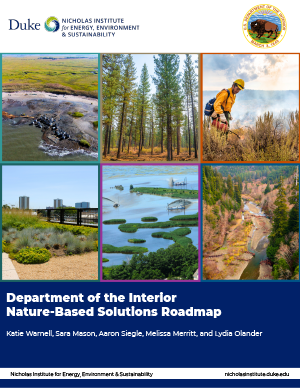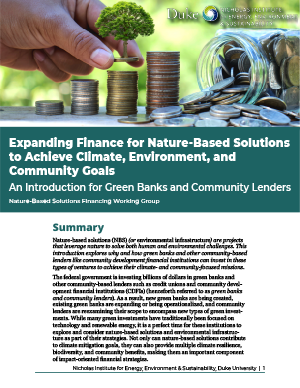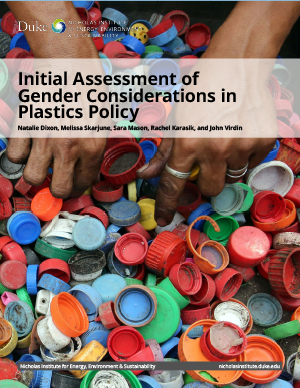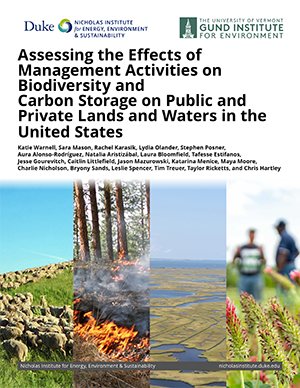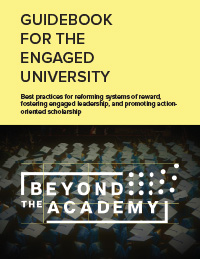Publications
Evidence Library for Mangrove Degradation and Recovery
Mangrove ecosystems provide numerous benefits to both people and nature, including providing important habitat for wildlife species, nursery habitat for fish and shellfish, recreational opportunities, and protection for coastal communities. This evidence library synthesizes the scientific literature and expert knowledge to share information on what is known—and not known—about how storm-induced changes to mangrove ecosystems might impact mangrove ecosystem services.
Department of the Interior Nature-Based Solutions Roadmap
This comprehensive resource, created in collaboration with the US Department of the Interior, is a first-of-its-kind reference for implementing nature-based solutions. Nature-based solutions are actions to protect, sustainably manage or restore natural or modified ecosystems to address societal challenges—including climate change—in ways that help people and the environment. Examples cited in the Roadmap range from urban stormwater and runoff management to prescribed burns to living shorelines to restoration of various ecosystems.
Financing Nature-Based Solutions via the Greenhouse Gas Reduction Fund
The $27 billion Greenhouse Gas Reduction Fund (GGRF) in the Inflation Reduction Act—particularly the $14 billion National Clean Investment Fund and $6 billion Clean Communities Investment Accelerator—represents a once-in-a-generation opportunity to leverage private capital for investments in environmental infrastructure and nature-based solutions, but the groundwork needs to be laid now. This document summarizes the relevant GGRF funds and their applicability for nature-based solutions.
Expanding Finance for Nature-Based Solutions to Achieve Climate, Environment, and Community Goals: An Introduction for Green Banks and Community Lenders
There has been unprecedented recent government investment in nature-based solutions. This document lays out a vision that describes why nature-based solutions are relevant and important to green banks' and community development financial institutions' climate- and community-driven missions, and what types of projects these institutions might support.
Initial Assessment of Gender Considerations in Plastics Policy
Globally, women are disproportionately burdened and impacted by the harmful effects of plastic across the life cycle of products. These burdens vary across cultural, socioeconomic, and political contexts, and based on how women engage with plastic, but broadly include health and safety impacts, access to opportunities in the waste sector, and exposures to harmful plastic-associated chemicals. This initial assessment considers how women, people who are assigned female at birth and have been socialized as females, and/or female-identified people are considered in plastics policy scope and implementation.
Assessing the Effects of Management Activities on Biodiversity and Carbon Storage on Public and Private Lands and Waters in the United States
Natural and working lands (NWLs) provide many benefits to people, including storing greenhouse gases (GHGs), supporting biodiversity, and generating other ecosystem services. Management of NWLs can influence their condition and function and therefore the benefits they provide. This project surveys the synthesis literature to assess how management actions on various types of NWLs affect biodiversity and GHG outcomes. This information can help to determine how to best manage these lands to contribute to both biodiversity and climate solutions in the United States.
Guidebook for the Engaged University
The next phase of academic reforms must build toward the broad institutionalization of engaged scholarship, as demanded by students and the communities that surround and support universities. The Guidebook for the Engaged University gives the academy both a vision and a roadmap to a more impactful future, in which universities, including their scholars and staff, catalyze solutions for the world’s most pressing challenges.
Developing Key Performance Indicators for Climate Change Adaptation and Resilience Planning
This document from the Resilience Roadmap project recommends a common approach to developing key performance indicators (KPIs) for climate change adaptation and resilience planning, drawing upon current science and tools referenced throughout. The work is particularly aimed to support climate adaptation and resilience planning by US federal agencies and thus presents principally US national-level data and online resources. The approach is broadly applicable across agencies, sectors, and systems and can also be applied by state or local planners and adaptation/resilience practitioners.
A Menu of State Actions to Promote Forest Carbon Sequestration and Storage
Across the U.S., states are developing policies and programs to help promote forest-based natural climate solutions. This effort is bolstered by a growth in forest carbon programs that aim to make entry into the voluntary carbon offset market accessible to all landowners. Here we present a “menu” of policy and program options (that we call action items) derived from existing state programs and policies that decision makers can leverage to promote forest carbon solutions.
Tracking the Benefits of Natural & Working Lands in the United States: Dataset Evaluation and Readiness Assessment
Natural and working lands (NWL) in the United States provide many benefits, including food, climate mitigation, recreational opportunities, jobs, and many more. There is currently no coordinated approach in the United States to track how provision of these benefits is changing over time. This project begins to fill this gap by identifying datasets that can be used to track the status and trends of NWL benefits (i.e., ecosystem services), assessing their readiness for use in the near-term, and highlighting data gaps and limitations that need to be addressed for a national assessment.


